The 1950s Housewife
These days, dressing retro is increasingly popular, and styles that our grandmothers wore in the 1950s are considered quite fashionable to wear to parties and weddings. Mention the term “1950s housewife”, however, and most women will take offense. Imagine having to clean all day and not being able to get a job, even if you wanted to!
But did women really have it so much harder back then than they do today? Do our modern lifestyles appear leisurely by comparison? Have the decades since served to lighten our loads, or do we women actually have higher personal expectations and more societal pressure than ever?
Societal Norms
In the 1950s, being a married woman and housewife was considered the ultimate achievement. To have “caught a man” in an era when many of America’s young men had died in the war was a bigger accomplishment than we realize today. There was a much larger ratio of women to men in the young generation of post-WWII America, and it’s estimated that from 1942 to 1952, one million American soldiers married women from different countries while overseas! (Source) That translates to mean there were far fewer “fish in the sea” for young American women to choose from, between those who had died and those who had married non-Americans. So we can understand why our grandmothers may have spoiled their husbands just a bit – a husband was someone to be proud of! An accomplished wife who was a welcoming hostess was seen as a direct reflection on her husband and often helped progress his career and status in the community. Of course not every woman felt fulfilled at home or was the “perfect” happy housewife. And many of them worked outside the home whether they were married or not. But I do think there are many things about the decade that we forget to remember.
The “Good Old Days”
In comparison with our modern lives, I have good reason to believe that overall the 1950s would have been a more idyllic sort of lifestyle. People lived closer to their food sources (“farm to table”), got plenty of fresh air and easy exercise (walking to the market a few times a week), had a much stronger sense of community with their neighbors (“Ethel, can I borrow some sugar?”), and didn’t have to deal with the stress of heavy traffic and long commutes!
Held in High Esteem
While the 1950s woman may have had a lot on her plate, her position was held in high esteem and she was praised by society. I guarantee you she never heard the modern-day question, “You’re a stay at home mom? What do you do all day?” On the contrary, every magazine from the 1950s in publication is crammed with advertisements exclaiming, “Make the housewife’s job easier! With new, time saving devices!” Everyone understood that keeping a clean house, doing the cooking, dishes, laundry, errands, being a home manager plus hostessing was a serious, full-time job.
Cleaning, Cleaning, Cleaning
There is a popular idea going around the internet that 1950s women had to follow an exact and ridiculous cleaning schedule every single day, based on a recommended schedule which someone found and posted on Pinterest a few years ago. To come to such a conclusion is inaccurate, both because of a plethora of 1950s publications to the contrary, and because of this: Today, we have many dozens of books telling us exactly how to have the perfect, Martha Stewart, ultra-organized home. In my house alone I have half a dozen such books, setting forward the “simple” cleaning plan to keep your house perpetually spotless. I would guess that none of us follow any one cleaning plan exactly, because they don’t allow for real life. But if our grandkids found those books in fifty years from now, they may assume that all women back in the 2010s had to keep their homes looking “Martha Stewart” perfect in decor, and “Marie Kondo” perfect in tidiness and organization! You see what I mean? Little would they know that these women actually wrote books because American houses are, on average, such disasters! 😉
“Take It Easy“
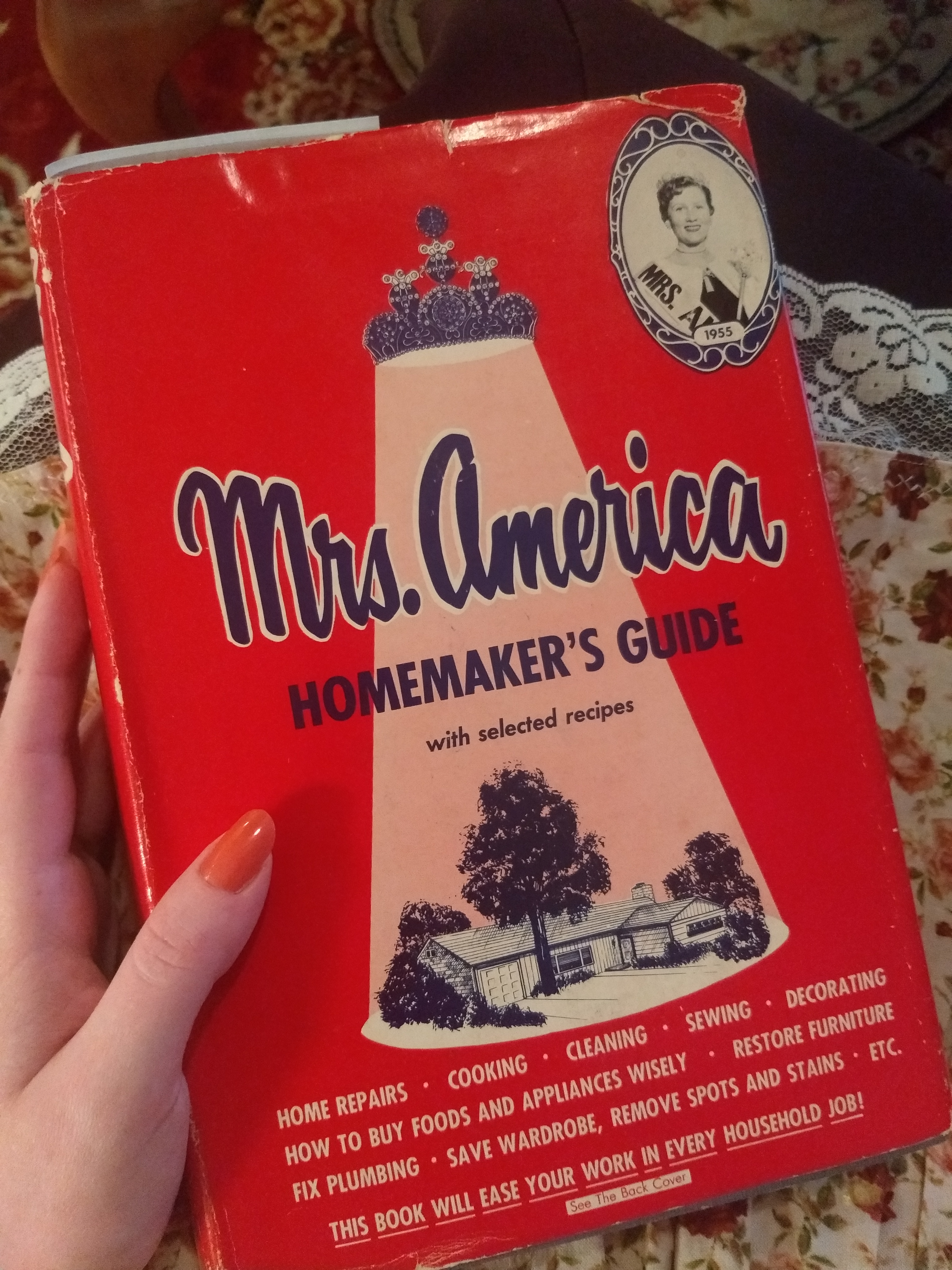
The idea that women were expected to clean all day long is also contradicted in many books and magazines for women that were published in the 50s. From Mrs. America Homemaker’s Guide (1954 – by Wanda Jennings), comes this advice:
“Don’t let your schedule become an iron-clad ‘must-do’ list. It is designed to help you take it easy, not to make you a ‘slave’ to housecleaning regimentation…When you are following a housecleaning schedule, be sure you are doing the work the easiest way possible… I don’t intend to tell you how to run your home – that would be intruding.”
Similarly, a vintage memoir recalled, “Mother had all the housework done by 2:00 pm every day. She would then take off her hair scarf, don a pretty dress instead of a housedress, and sit on the front porch reading. Neighbor women often visited on the front porch. To be caught “dirty” after 2:00 would have been sheer disgrace!”
We All Love Lucy
And in May of 1952, the I Love Lucy show aired an episode all about Lucy’s shortcomings as a homemaker and detailed her husband’s demands that she stick to a tight and rigid schedule. I giggle when I read her time schedule! Honestly, it looks like a breeze compared to what modern women accomplish every day. Her actual “work” time during the day comes up to just around 3 hours and 40 minutes between laundry, cooking, cleaning, errands, and dishes. The remaining hours were spent eating meals (2 1/2 hours), or on leisure time such as watching television after dinner or relaxing with naps and phone calls. If you look closely at the time, she woke around 10 am and went to bed around midnight, no doubt set up by the prop department as such because Ricky worked late nights most evenings at his club. Even though the show was famously so silly, this schedule would have allowed sufficient time to keep a small, New York apartment clean. I spend less time than Lucy’s 3 hrs and 40 minutes a day on housework and manage to keep a three bedroom house clean!
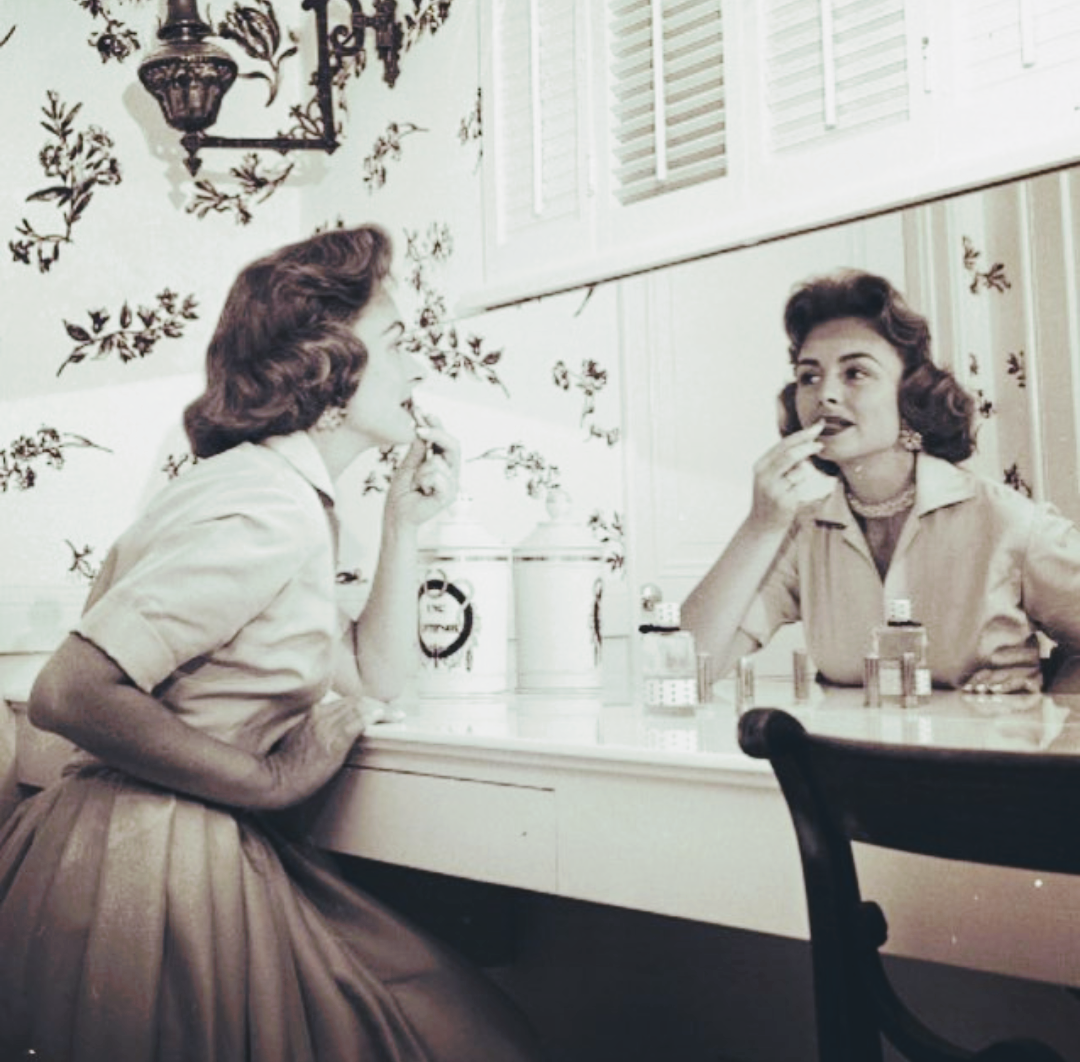
It also seems to have been common practice for women to allow time to pamper themselves a bit. Society seemed to know that a stressed woman is usually not a pretty woman, and encouraged them to do their makeup every day and touch up their manicures every night. Their dressing tables were prettily decorated and probably kept them sane on busy days. 😉
~~~
Share and Share Alike
Then, for the younger brides, they apparently cleaned their smaller homes in record time before dashing out the door for other pursuits. And their husbands reportedly helped with the chores, too. McCalls Magazine spent an entire year interviewing one hundred young brides and their husbands in the early 1950s. They devoted a substantial portion of their June 1953 issue to the subject with several in-depth articles. Here are a few notable quotes:
“I’m not a slave to my house. The surface looks fine, but the closets, drawers, and cupboards often go neglected. After a day’s work I’d rather relax with friends at our house, or go to a game or movie. Any of these is better than an evening of housework!”
“Young wives do not believe in periodic spring and fall cleaning… but they do their chores quickly and well. They are ably assisted by their husbands, who are willing and useful at scrubbing floors, taking down garbage, setting tables, drying dishes, even at cooking an occasional steak, a spaghetti dish, or a big Sunday breakfast.”
“The word sharing is the keynote of living with them, as with other young married people on campus. Bob does a big share of the daily housekeeping chores. Pat types class papers for him.”
The Career Woman
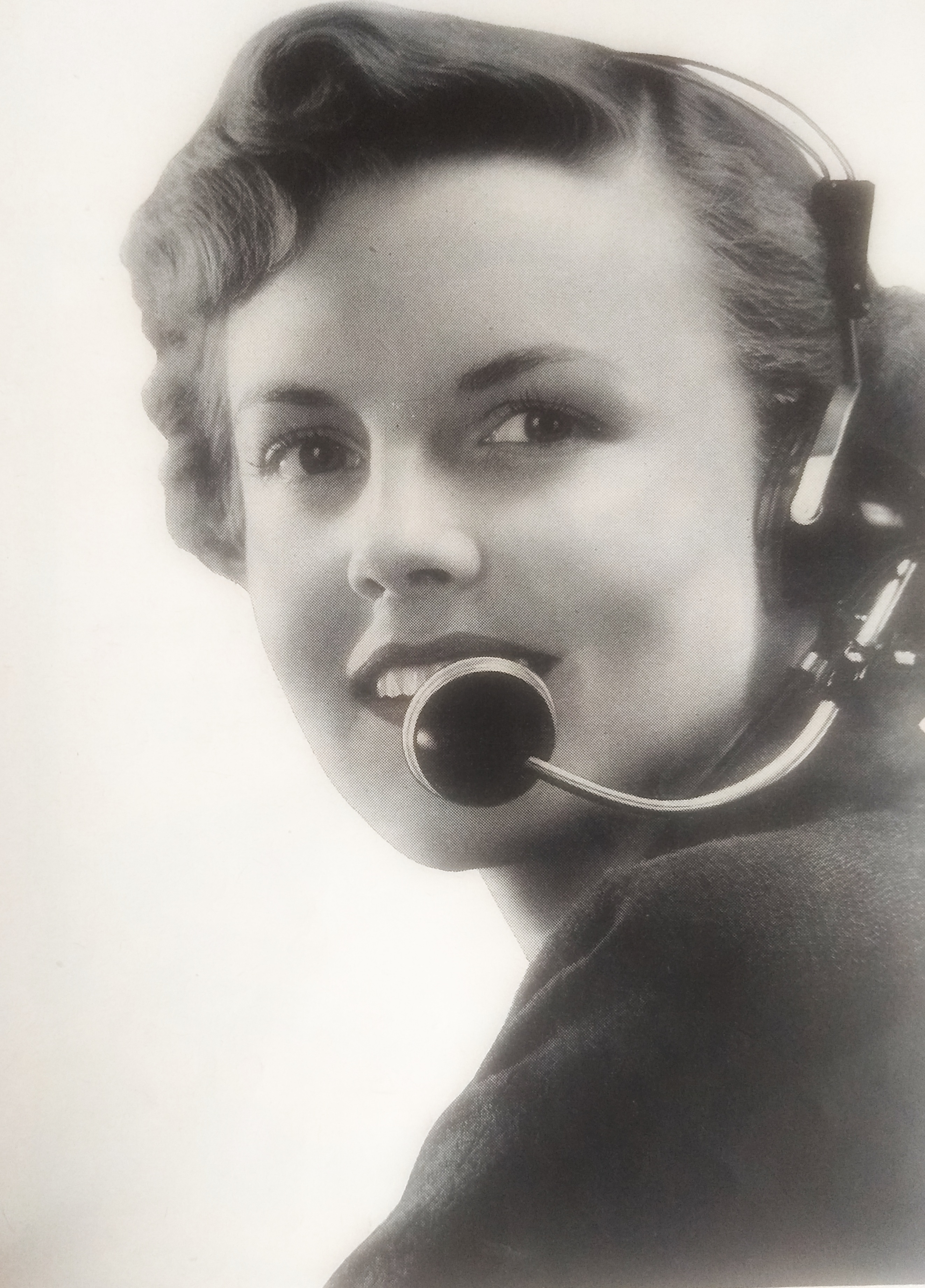
~Statistics show that unlike the sterotypes lead us to believe, a lot of married women actually did work outside the house. We tend to think that jobs for women were typically in the fields of teaching, nursing, or secretarial work. Many other women owned beauty parlors, were salesladies, telephone operators, authors, or fashion designers. But if you watch the classic television show “What’s My Line” (there are dozens of episodes on Amazon and Youtube), you will see women being interviewed who were everything from a judge to a stockbroker, a detective to a foot doctor, and a jail matron to a bridge engineer! By the late 1950s we had women working as “human computers” for NASA.

The famous author Anita Colby quoted in the late 1950s that according to recent nationwide statistics, “30% of married women still hold jobs. In fact, wives outnumber single working girls two to one… 45% of middle-aged wives are at work. They don’t have to earn money just to live… yet they go out daily to jobs.”
Again, from the June 1953 issue of McCalls Magazine:
“…Many student husbands are dependent on their wives. Romance does not seem to suffer, nor is masculine pride offended. ‘Why, I can’t think of anyone,’ said a young girl in a college town, ‘who wouldn’t be glad to work her husband through college.’ “ Hmm – that doesn’t fit with the negative stererotypes we’ve been led to believe about the 50s, does it?
So let’s compare each aspect of our lives with that of “Mrs. 1950”, and see which group of women actually has it harder:
The Average Schedule – 1950s Style
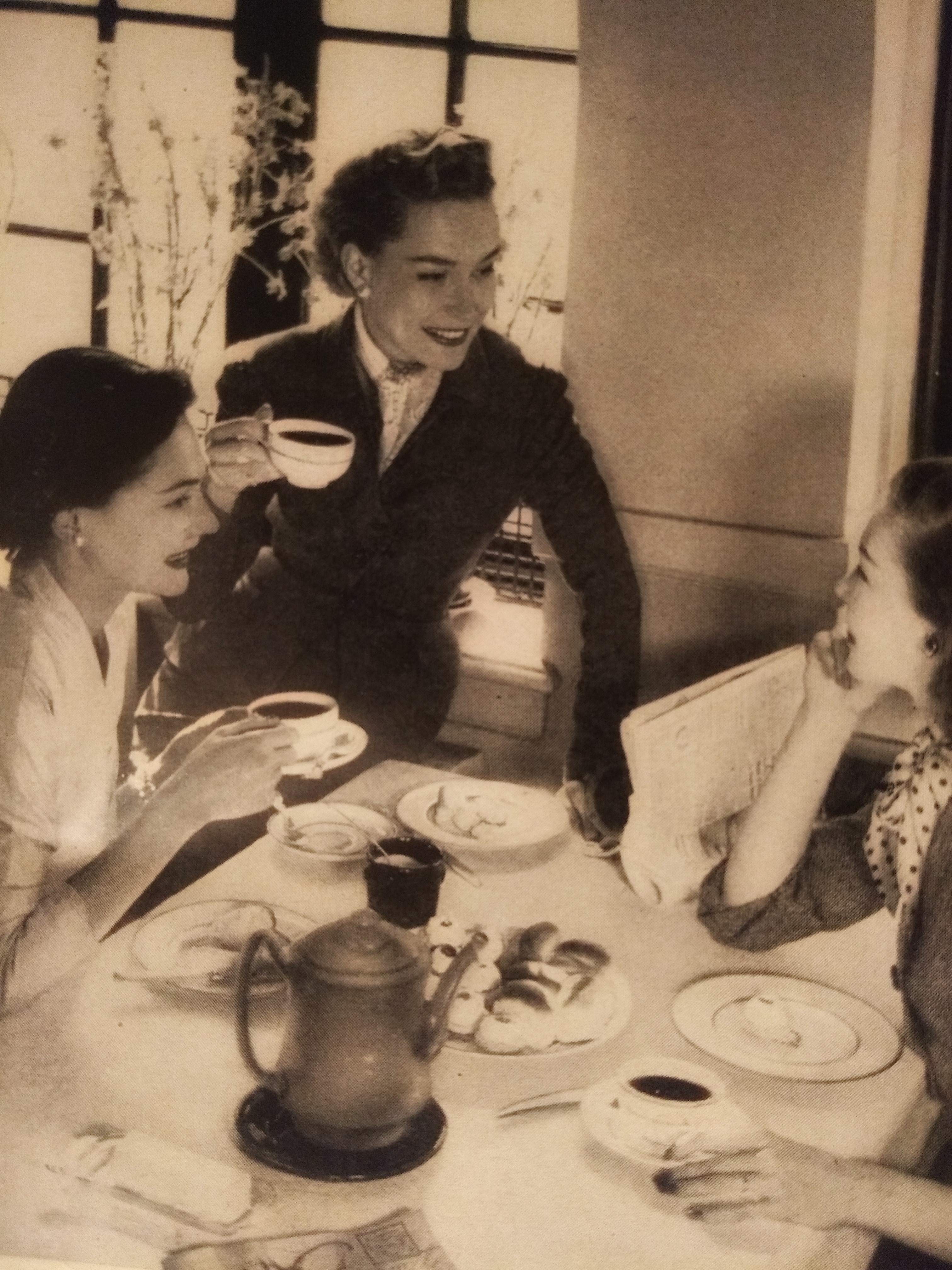
In the 1950s, the average housewife would have woken early after (ideally) 8-9 hours of rest. (Gallup poll documentation here.) She did her hair and makeup, served breakfast, washed the dishes by hand, made the beds, tidied the house, swept and dusted, and did gardening or sewing. Each day also had a “task” such as laundry, ironing, baking, weekly meal planning, and cleaning a room or two. She may have walked to the market to pick up fresh produce, and almost certainly did 15 minutes of gentle at-home exercises (more on that later!) If she had children, it is unlikely she drove them to school as most families only owned one car. Kids walked a lot more back then, to neighbors’ homes and birthday parties and even an errand or two.
In the afternoons she probably attended a local women’s club, played a game of bridge with neighbor ladies, or volunteered for some cause she believed in. Afternoon was a woman’s “down-time” when she was likely to read a magazine, set her hair, give herself a pedicure, take a nap or a bath, or use her vintage slant board. Drugstore creams and lotions applied daily coupled with a life devoid of constant pressure and deadlines helped preserve “youth and beauty” for many faces of the 1950s in a way we don’t see today.
By late-afternoon she probably had dinner on the stove. Several publications I’ve read insist that a woman should rest whenever she gets tired during housework, should take breaks every hour, and should have a 15 minute nap before her husband comes home. After serving dinner and dessert and doing a quick tidy of the kitchen, she was more or less “off duty” from housework and spent the evening with her family. There was a sense that it was important to make your husband happy, so she probably dressed up, cooked a meal her husband liked, and gave him a good kiss when he walked in the front door. ~ The biggest problem this woman faced was probably boredom from a similar routine every day. ~
The Average Schedule – Modern Version
The modern stay-at-home mom also rises early. She is told by society that she needs to “hustle” and accomplish as much as humanly possible in one day. She may or may not have time to shower if she has young children, so coffee and dry shampoo are often her best friends according to popular “mommy blogs”. 😉 She trips over the toys the kids left all over the living room floor, feeds the cat, takes out the dog, races to put breakfast on the table, makes herself a protein drink smoothie, and jumps into her daily tasks. Being a “bosslady” calls for constant drive and multi-tasking, you know!
Mrs. 21st Century Mom may drive the kids to school or daycare, or she might be a homeschooling mom who dives right into teacher mode for several hours. Hopefully her kids help with the cleaning after school, but if not she might be one of those moms who films her daily cleaning routine before editing and uploading to Youtube every week. She probably has a lot of responsibilities in her local community as well – volunteering, fundraising for her kids’ activities, or driving them to sporting events, classes, and music lessons. She most likely gets all her grocery shopping done once a week, rather than a few times a week like her 1950s counterpart. She drives to the gym several times a week for an intense workout session that leaves her muscles aching. She whizzes through her social media feed in the slower moments. She may be a blogging mom who is constantly sharing pictures of her home life and linking products for people to buy. The modern mom wants to contribute to the household income but is usually too busy to do so in any other fashion.
Hopefully – because she is so busy racing all over town – she put something in the slow cooker before she left home, or has a good stock of freezer meals to pop in the oven. When her husband comes home at night, she has good reason to be exhausted! Most likely, she is still wearing yoga pants, gym shoes, and an oversized t-shirt. It’s a popular look today, even for women who aren’t constantly on the go. Mrs. 21st Century Stay-at-Home Mom probably loves her life, even though it is a little hectic. According to this surprising Gallup poll, she also gets a lot less rest than her 1950s counterpart. And while we have more anti-aging products on the market than ever before, Mrs. 21st Century Mom certainly has more wrinkles and lines than Mrs. 1950s did, as stress often shows up on the face first. ~ The biggest problem this women faces is probably adrenal fatigue or exhaustion. ~
Diet & Exercise – Retro Version
In the 1950s, women mainly ate home-cooked food made from fresh ingredients (when possible) which were purchased from the market down the street. True, there were *some* processed foods which were heavily advertised in the 50s, but most families stuck to the tradition of eating healthful meals. Health courses taught in schools and published in every vintage cookbook I’ve found stress the importance of eating:
Several portions of vegetables and fruits each day, one egg, plenty of dairy, a small serving of meat, and some carbohydrates and grains.
This balanced diet meant that Mrs. 1950s was able to eat what her family did, including partaking of a small portion of whatever cake or pie she’d made for dessert that night. Back then, women (and men) were supposed to eat much smaller portions than we do today, so they had that working in their favor as well.
In the mornings, she did 15 minutes of calisthenic exercises, following along with an exercise show on television, or doing similar exercises she had learned in school gym class or “beauty books”. I’ve studied these for years, and they are similar to pilates stretching or ballet warmups. Her daily walk or bike ride to the market or on errands helped keep her fit and trim, and a couple hours of housework a day can burn a surprising number of calories! I have an enormous article on these vintage exercises here.
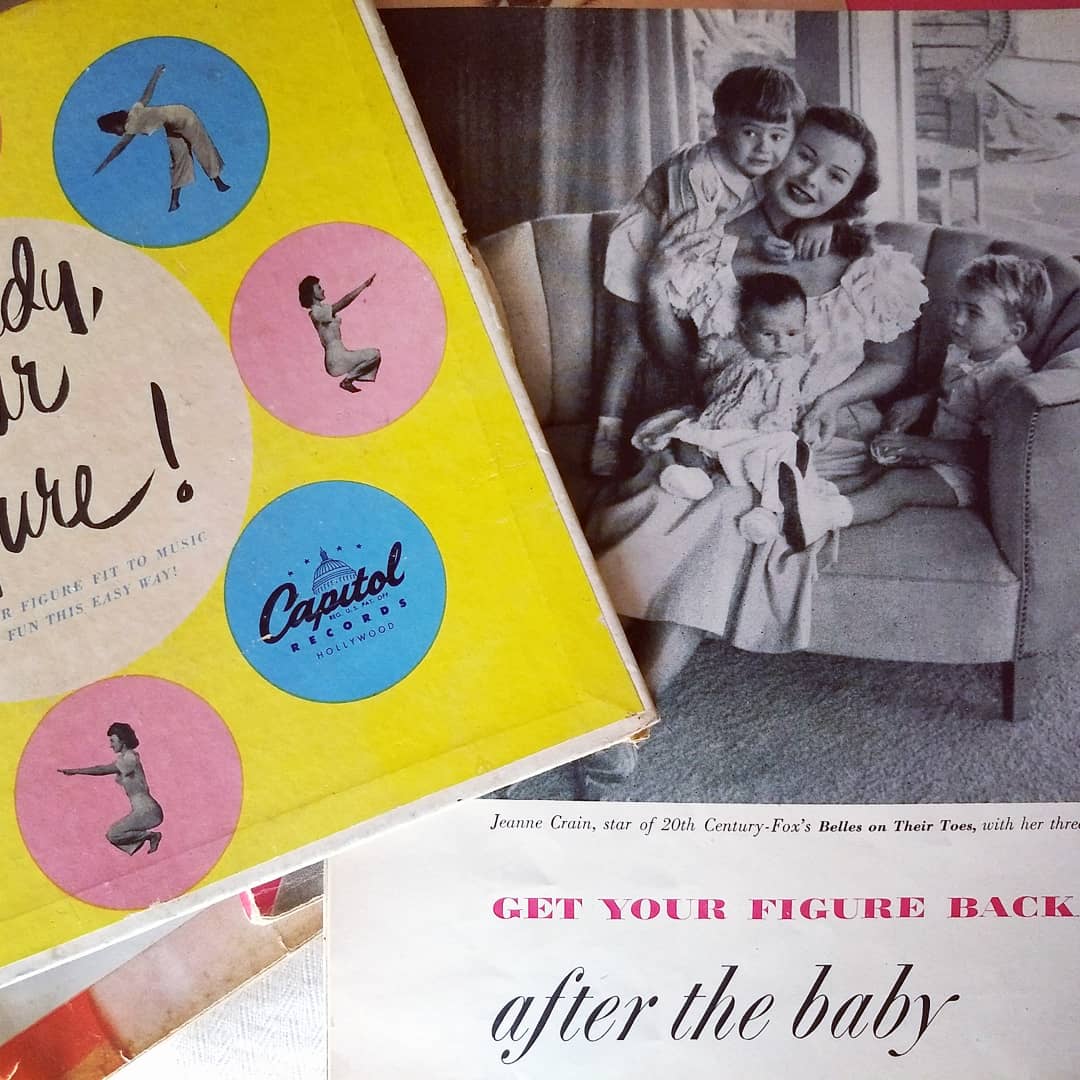
(In Hollywood, some women had *just* started lifting weights, and other women started attending calisthenic gym classes post-partum. But even most actresses were only relying on leisure sports such as walking, tennis, biking, and about 10-15 minutes of concentrated toning exercises a day to keep them in shape. I have so much documentation on this!)
Diet & Exercise – Modern Version
Today, society has put crazy expectations on us women! We are supposed to be more health conscious than any generation in recent history. Our food should either be keto, gluten-free, vegan, or made with a healthy-sugar-substitute. We are told to gulp down apple cider vinegar and stir powdered green kelp into our otherwise delicious orange juice, if we really want to be good, healthy people. We are essentially taught that it is almost morally better to only eat certain types of food. But once the modern woman leaves the kitchen, she’d better not rest on her laurels! We’re told to work-out our abs, glutes, and biceps to the point where we begin to resemble prize wrestlers. Even women who have just given birth are cheered for having “six packs” a few short weeks post-partum. The 1950s allowed for womanly curves and natural figures, often with a bit of elasticized shapewear. The current decade is honestly kind of brutal towards women’s bodies. We applauded for being “chiseled”, for sweating profusely during our entire 45 minute gym class or weight lifting session, spurred on by blaring music and shouting instructors. “Feeling the burn” is apparently the only way to be an acceptable woman, according to societal pressures.
When I compare the differences between these two decades, I honestly believe women had a simpler and easier life back in the 50s!
No time period is perfect, but to think that everything is better now than it was in the past simply isn’t true. Yes, the 1950s had a tendency to make everything about the husbands, but our culture today makes everything about the kids. Maybe somewhere between these two philosphies there could be a healthy balance – especially for those who want to keep a strong and happy marriage.
~~~
I’ll admit it, I am “part” 1950s housewife. I make breakfast for my husband every morning before he leaves for his job, because he works hard and needs his energy. I pack his lunches and plan the dinners, and I have fun doing so! I do the housework while he’s away, and I do 99% of the cooking for dinners.
I get great fulfillment out of helping my husband and keeping our home in order, and I have a tremendous affinity for old televsion shows like “The Donna Reed Show”. Really managing a home and making it a welcoming place is an art, and takes time to keep it that way!
My husband would never expect all these things from me, but I love taking care of the house so that he doesn’t have an extra burden when he comes home from a taxing day at work. If I’m not looking, he will start doing the dishes behind my back! 😉
But I also run my costume & pattern business I started ten years ago, and I am able to devote all the time I need to both endeavors so that I have a balance that works for me. I’m able to work on my business in the afternoons, and still get my housework done in the mornings.
So in short, I think it’s important that we really read and study about real life in the 1950s before we assign stereotypes to an entire generation based on one article or a picture we saw on Pinterest. Don’t just take something you read in a modern book as absolute fact about an older era – pick up a book or two that was actually in print back in that decade! Ebay and local vintage shops are brimming with forgotten editions just waiting to tell their hidden stories!
And now, if you’ll excuse me, I think I’ll go iron a few of my husband’s shirts.
Till next time,
Katrina Holte

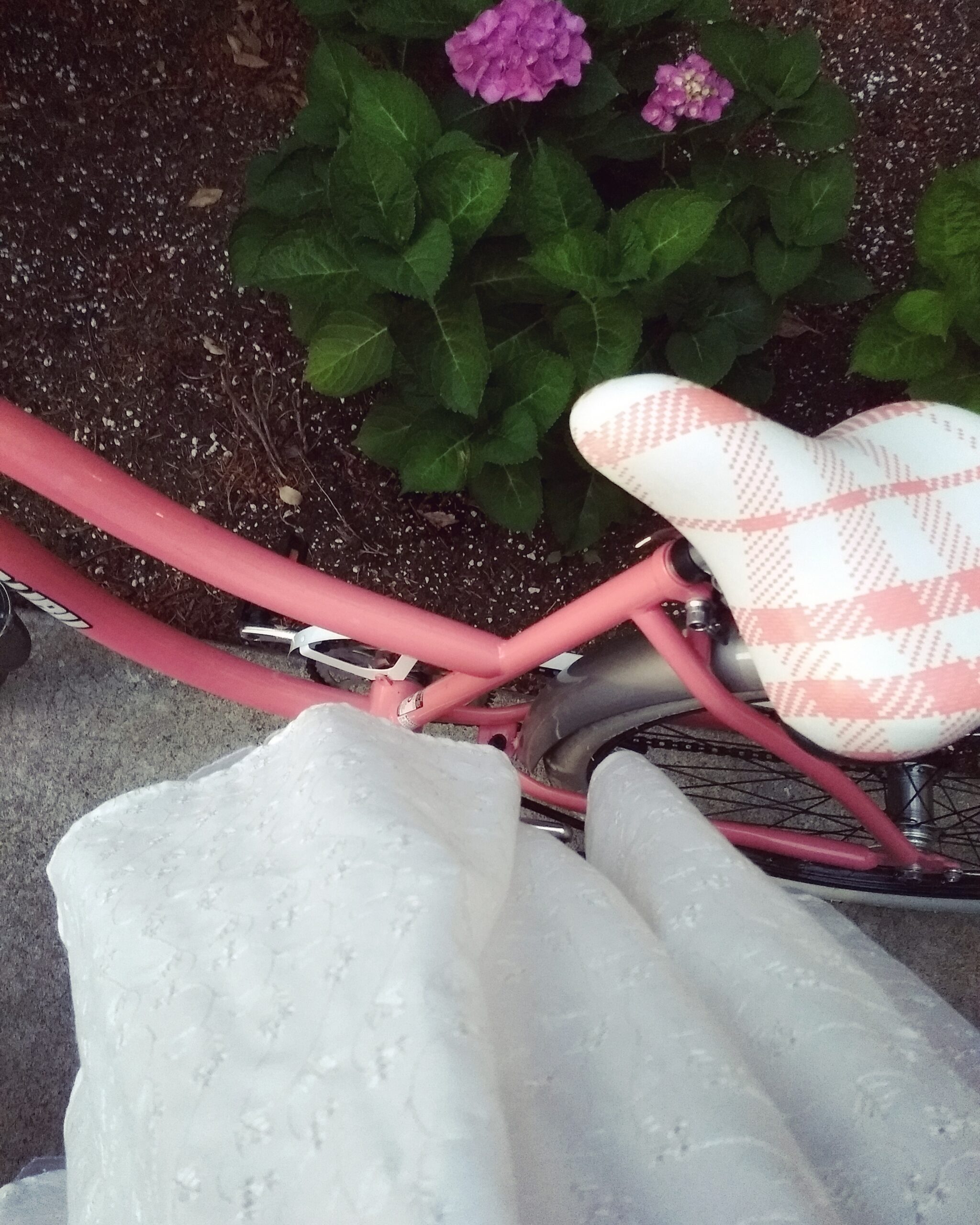
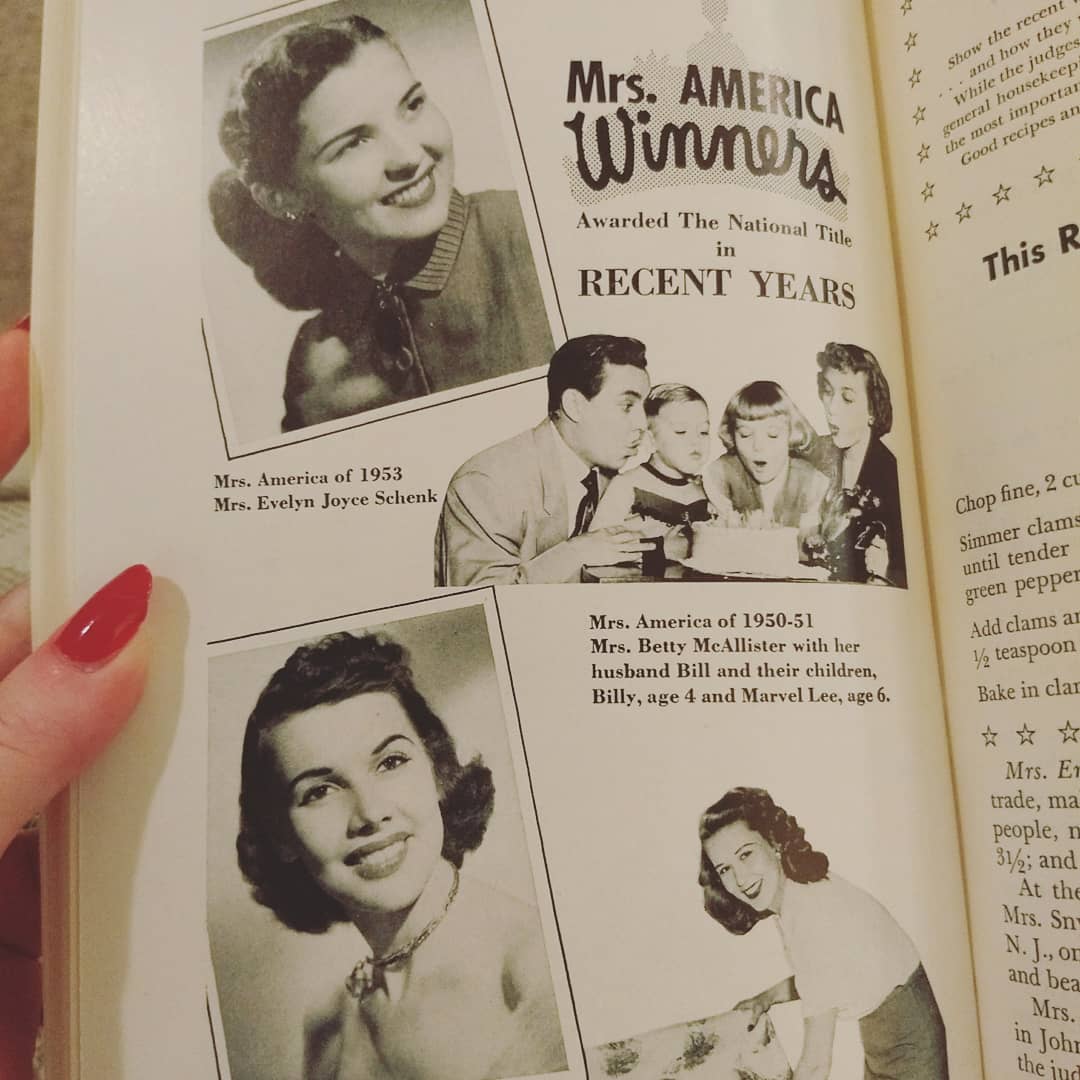
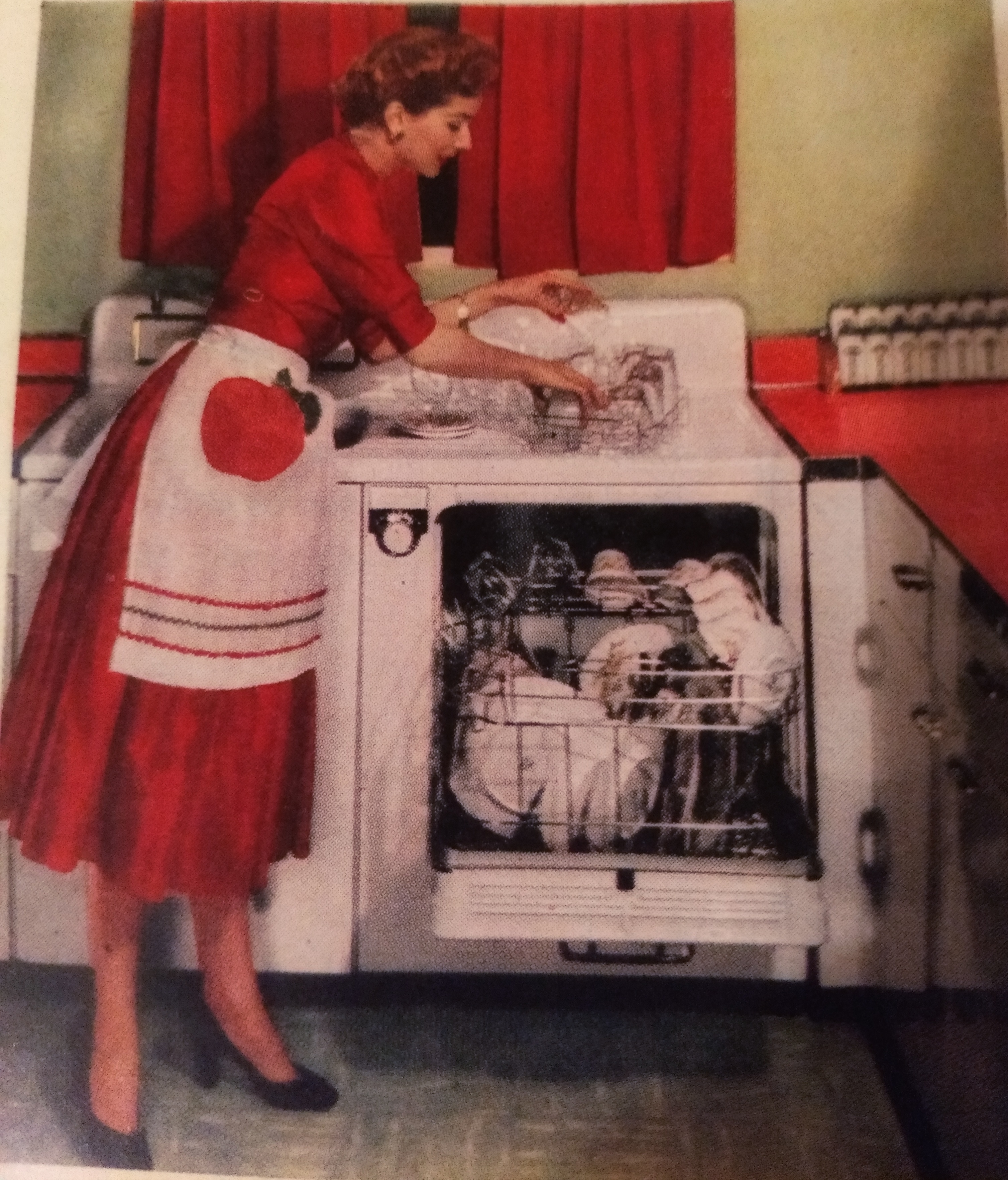
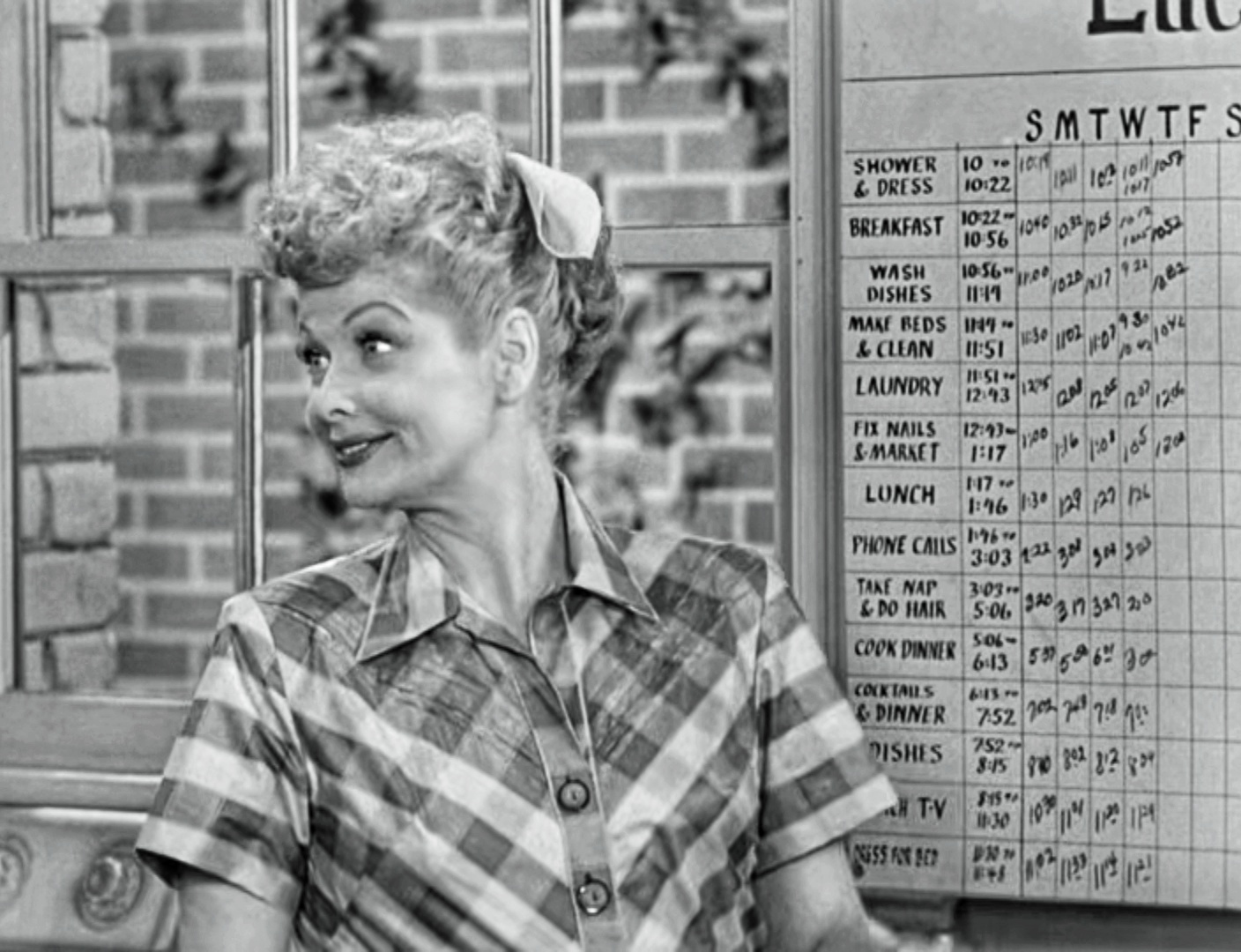
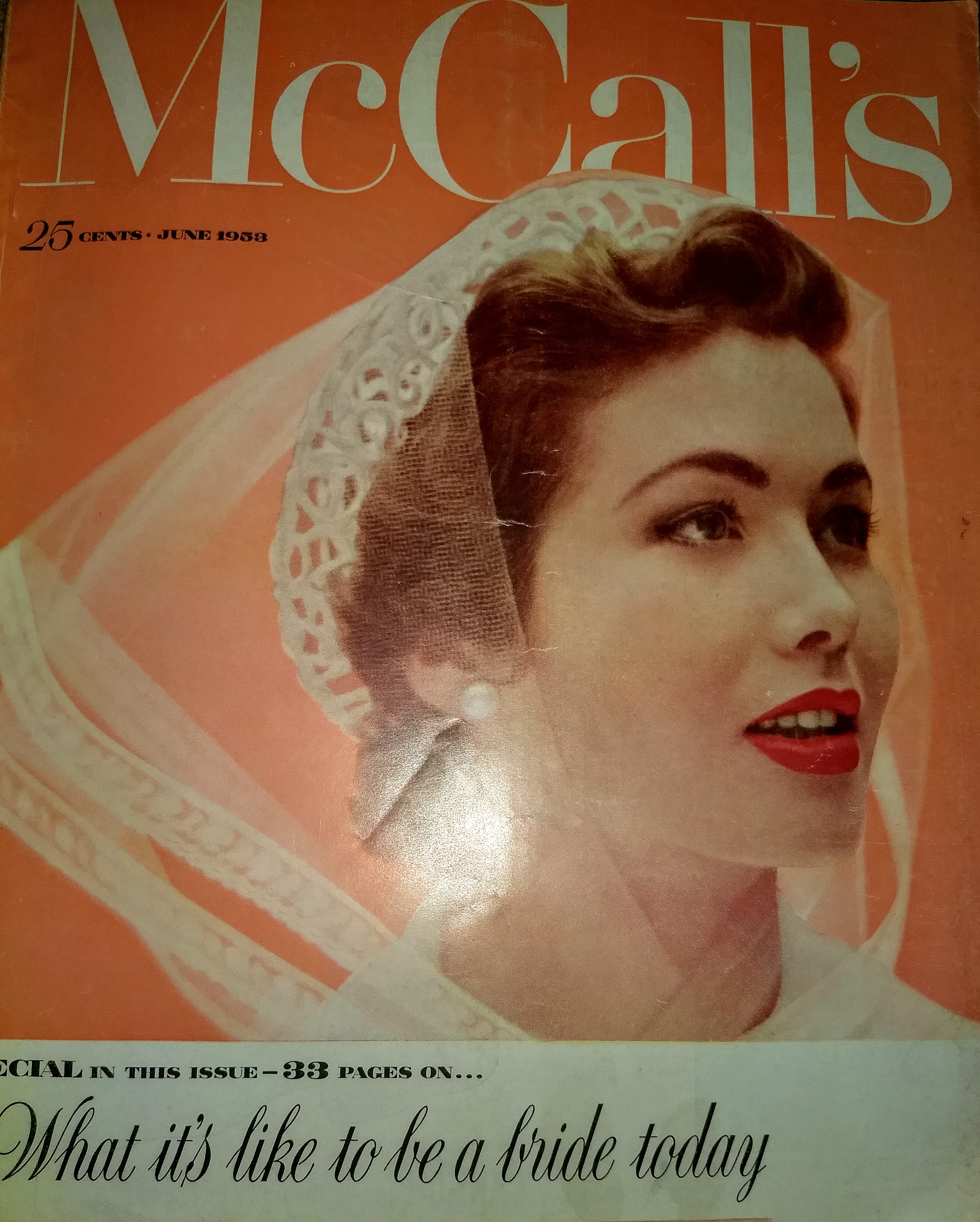
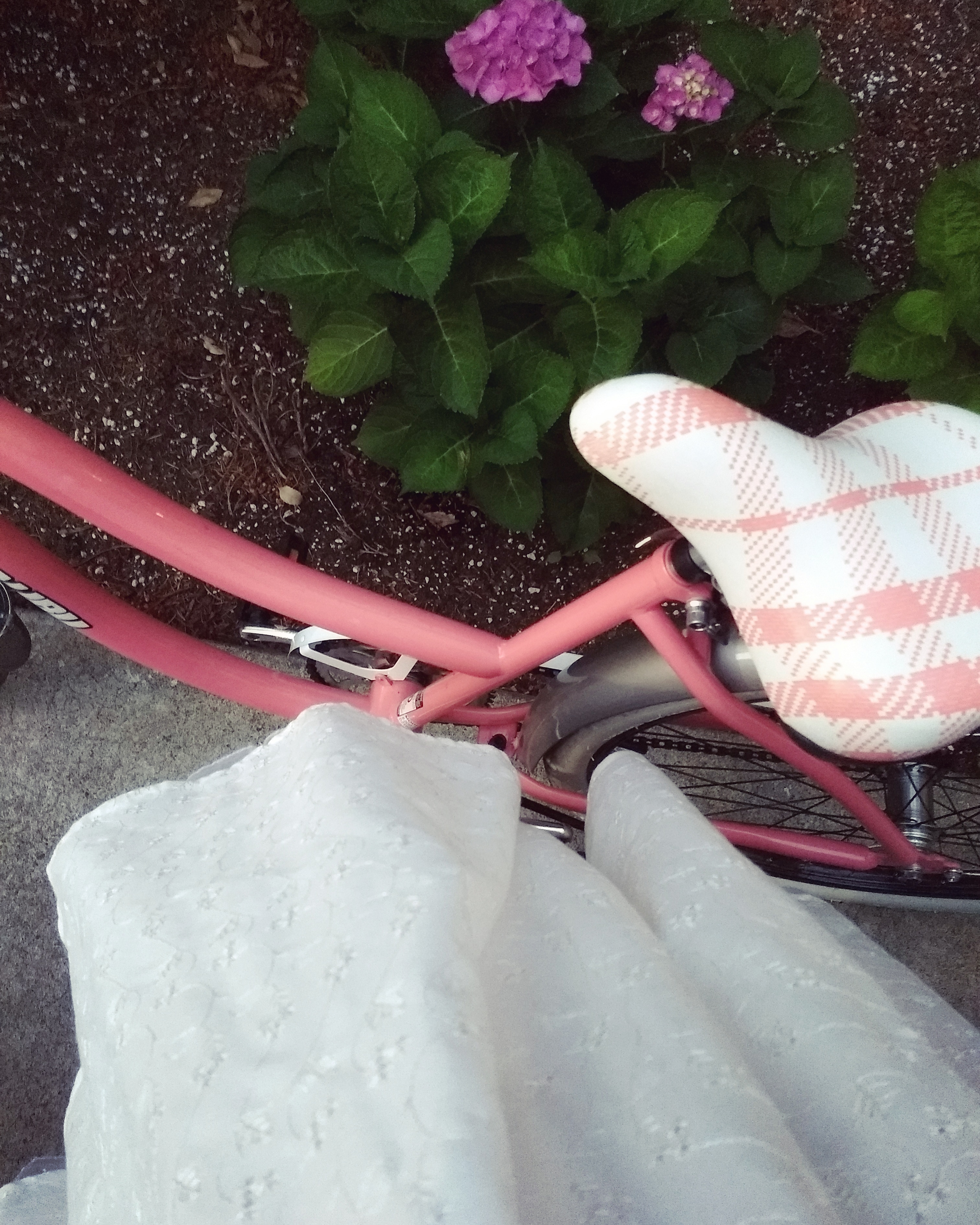
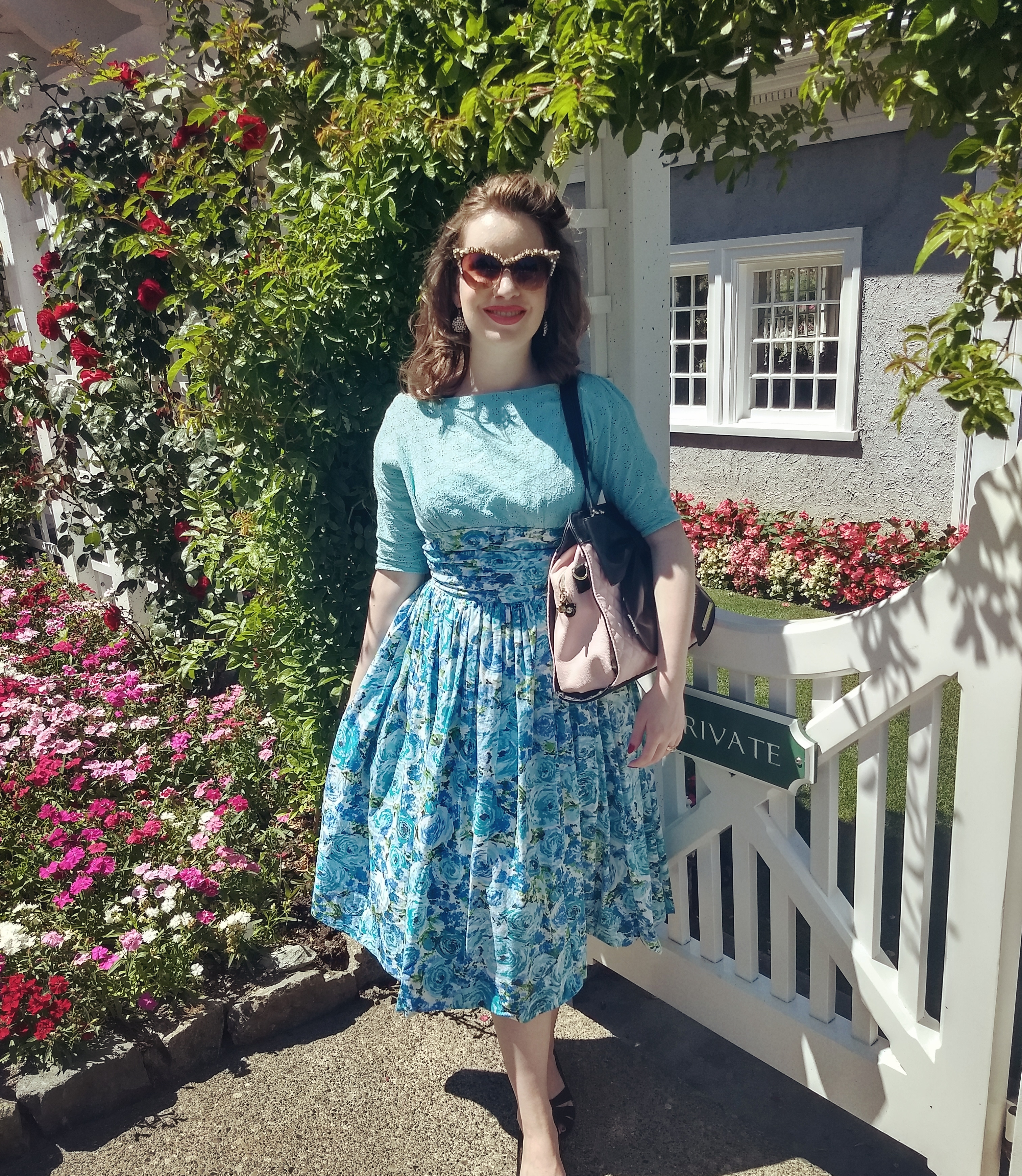


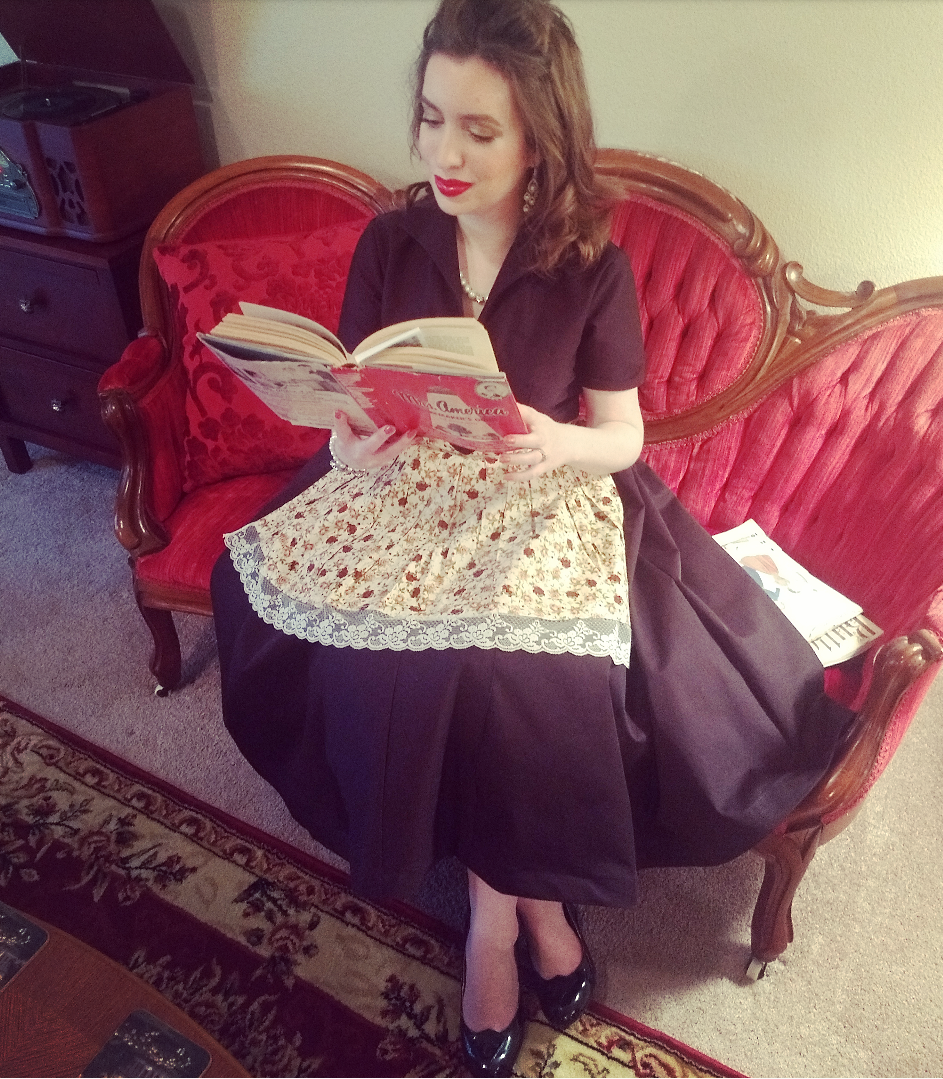



This is my new favorite thing. Loved the article.
Thank you so much for sharing this! Sometimes by looking at the “strictness” of bygone eras, many myths are born…so thank you for digging in deeper here!
I would personally love to hear some of your very own thoughts about home decorating/management! ♥
Thanks so much, Maggie! I’ve developed my personal style in running the house and decorating over the last few years and it’s really been a joy. I would love to blog about “elegant homemaking” as I call it, but I’m not sure this is the right space for that… However, if you want a peek into my every day home life you should go follow my personal Instagram account which is @katrinaariana.
Thank you Katrina for your insightful blog post. I am freshly married to a wonderful Godly man and your post really encouraged me, because people keep telling me that I am strange to want to stay home and be a housewife. In this modern world people think it weird to want to cook and clean for their husband, but i don’t because I love him and it is a way to show him that I love and care for him. Thank you for doing thi blog, and I look forward to the next entry.
Hi Victoria! I’m so glad it encouraged you! There is this silly idea these days that running a home is not a real job. However, if you pay someone else to come clean your home, it’s considered a career for them! 😉 There really is a double standard in society towards stay-at-home women, and I believe that every woman should make the career or home choices that they feel is best for them.
In the 50s, the pressure to be the “perfect housewife” drove many women to pioneer various careers, but today’s pressure to be a “#bosslady” is really making a lot of women want to put down roots in their homes! It seems like whenever society tries to set one specific stereotype for how all ladies have to be, it kind of backfires on them. Today, we definitely need to be more encouraging to women who choose to make home management an art and full-time mission! Keep up the good work!
I really enjoyed this post. I’ve been a housewife for the past two years because health problems took me out of the work force. I always thought I’d return but both my husband and I were pleasantly suprised by how much we like the new arrangement. The only thing I truly hate is the dreaded question of, “so what do you do?” Everytime I answer with, “housewife,” people looked so purplexed by how to respond to that. I know back in the day that would not even be an issue. Oh well, I do really enjoy being a housewife!
Hello, Arlene,
I’m so glad you enjoyed this article! Isn’t it amazing how well a household can be run when one person is working out of the home and the other one is based in the home? I’ve been amazed at just how much there is to “do” every day! Even if I didn’t run a business, I could literally spend all day, every day, just keeping up on the dishes, sweeping, mopping, cleaning the kitchen, vacuuming, tidying the front yard, doing the laundry and folding it before it gets wrinkled, and ironing all my hubby’s shirts for work. I could literally just do those things plus cooking nutritious meals and it would take up all my time! Since I do run my business I have to juggle both things and sometimes let a few things slide around the house, but overall I like to keep up on both as well as I possibly can. The art of making a home a welcoming place really pays off in this crazy world, I believe. The more unkind that society becomes, the more desperately we need our houses to be a place of peace and order and comfort. It’s also so wonderful to be able to share that with friends and relatives. Thank you again for the comment, and I hope you have a fabulous week ahead.
All the best,
Katrina Holte
I’m sewing outfits together for my daughters school play. I stumbled upon this blog post by searching for patterns. I really enjoyed this post it was very encouraging.
Hello, Tonia,
I’m so glad to hear your enjoyed it! I haven’t seen some of the concepts in this article online, so I wanted to add it to the “vintage” conversation!
Have a wonderful day,
Katrina Holte
Thank you Dear Katrina!! Loved this health article!! Very good reminders!! We Israeli housewives are still actively living a lifestyle like those gals in the 50’s. 😃 Hallelu YAH for fresh air, healthy food and exercise!! Way to go on your successful business!!
Dvora that’s wonderful! I loved the time I spent in Israel and was amazed at how much walking there was to do – we Americans are really spoiled! It is much better to live a less luxurious but healthier lifestyle. Hamon brachot! ~ Katrina
I love love love what you are doing! What a wonderful life you are creating for your husband and yourself. I bet he feels so blessed. Keep posting!
Dear Katrina,
Though I do not dress or decorate my home in the 50’s style I do live a life very similar to one of that decade. I have been a stay at home wife and mother for the past 32 years and I love it! My home is always clean and tidy. I cook fresh, well balanced meals(never packaged or frozen) and I love to decorate and garden. In addition I love fashion and always try and dress well and am always well manicured and wear make-up. I never leave the house without looking my best. I do exercise twice a week for 1 hour each session with light
weights and stretching. I believe in as you do that staying home and taking care of your husband while he works and supports you both is a joy.
I loved reading your article. For the first time I in my life I am “just” a housewife and I’m loving it but struggling to get use to it at the same time. One of the things I have struggled with the most is resting. Your article helped me to realise this, and now I am going to try and get some rest in my day! I shall be following your blog now. Thank you 🙂
Hello, Maya,
I’m so glad to hear this! Thank you for the comment!
All the best,
Katrina
I think what you’re doing is fabulous. It’s the not the life I would choose, but as someone who sews? this is beautiful. I read the article about you: 4 kids? Will be a piece of cake. I have 3 girls. http://www.flylady.net might fit with your vintage lifestyle. Beautiful work.
Thank you, Genia! I am glad we live in a world where women can choose what they want to do, even if our culture only celebrates one type of woman right now – the “Boss Lady”. 😉 I am familiar with Fly Lady! I prefer to use a 1950s schedule for house cleaning, but that’s just my personal preference.
As for kids, I’m the oldest of 21 cousins! By the time I was 19 I could watch 20 children at a time by myself for a couple of hours, and even ran my aunt’s house of 4 children under 5 (two in diapers) for a couple weeks while she was in the hospital. I did the cooking and baking from scratch, laundry, dishes, and everything else that goes along with caring for 4 young siblings. 😉 I was exhausted every evening, but loved it! When it was over I figured that if I could pull it off as a single girl of 19, I’d be a pro at it once I was older and married! 😉
Thanks for the comment!
Absolutely loved the read, Katrina!
Being the oldest of 5, I grew up helping my mom with baby siblings, and by age 8, was making bottles and changing diapers — cloth diapers, pins, rubber pants, and I knew my way around a wringer washing machine by age 10, laundering those very same diapers I changed through the day, including hanging them on the clothesline to dry!
Still love ironing and washing dishes by-hand to this day!
[…] see my daily vintage exercise routine, I’ve created a video so you can follow along! The 1950s housewife led an active lifestyle, but also did stretches and workouts at home. This 1950s workout follows […]
Hi, I totally agree with your point of view. It is what I believe and exactly what I say when challenging the people who want to ‘argue’ with me about this topic! 😅
I consider myself to be “part” 1950s housewife too as I teach in winter but don’t in Summer – I see it as having the best of both worlds 🤷♀️.
One question if I may ask… can you share your point of view about the increasingly popular motto -“vintage fashion but not vintage values”.
If you don’t feel like publishing your thoughts about it I understand but would really like to hear your point of view.
Thank you so much,
S
Hello, Svet,
That’s a great question, and as you guessed, I do have quite a few opinions on the subject of “vintage values”! Most people have no clue what vintage values were and are too busy rehashing the phrase to actually do any research on it. Thank you for the suggestion and I’ll definitely put that on my list of things to do.
All the best,
Katrina
Hi Katrina,
I would just like to ask where you got the quote by Anita about the statistics of working women in the 1950s. I’m writing a paper on this and would love to know the source. Thanks 🙂
Hello, Kincso,
The statistic you’re referring to comes from the book “Anita Colby’s Beauty Book” (revised edition 1958). She was a respected editor of her day, so likely had a reliable source.
Hope this is helpful,
Katrina Holte
Thank you for this wonderful article! I was born in the wrong era and I very much appreciate hearing from other like minded women!
[…] The 1950s housewife symbolizes post-war America. She represents societal norms and expectations of that era. This section explores her daily routines and domestic life. […]
[…] © Edelweiss Patterns […]
Hello! I’m a Newly Engaged 24 year old and I absolutely love this! I have always felt drawn to these type of eras and this whole article felt like a big warm hug.
Brooke, I’m so glad you enjoyed it! Congratulations on your engagement and upcoming wedding.
All the best!
Katrina Holte
I miss a lot about the 1950s even though I was born in 1972.
I know how you feel ~ I grew up reading detailed memoirs about childhoods in the 1930s and 50s, so I feel like I got a window into what America used to be. Every generation has positives and negatives, but in many respects we have lost so much.